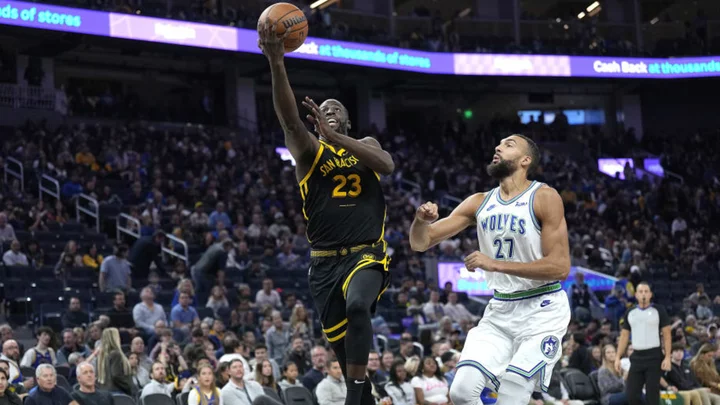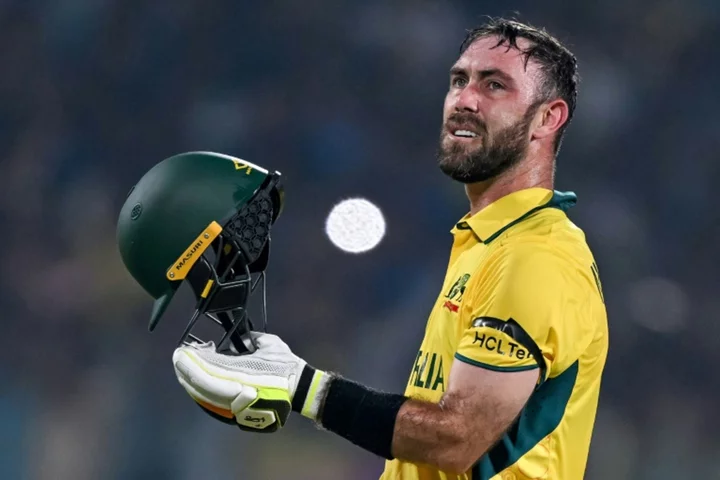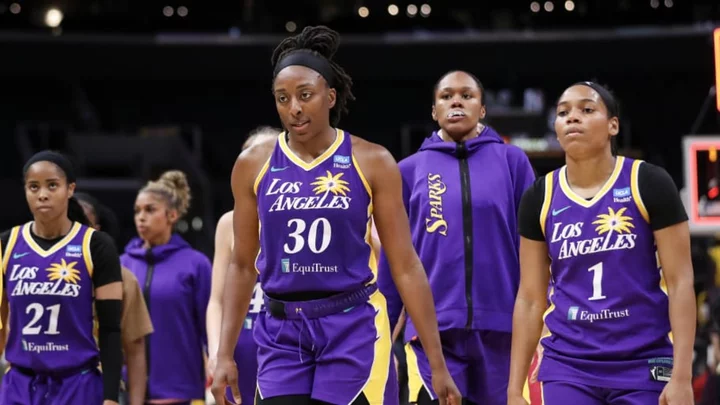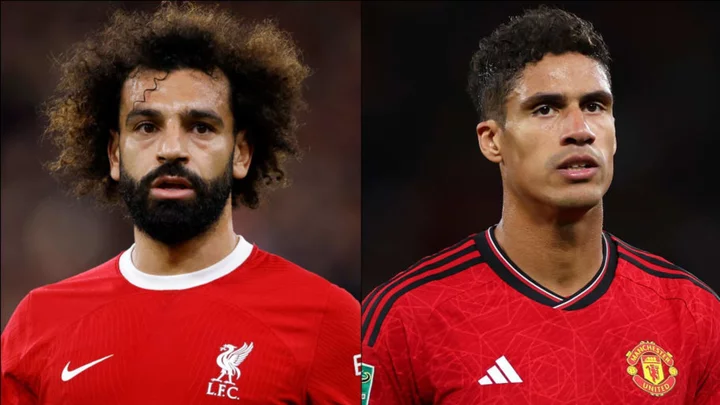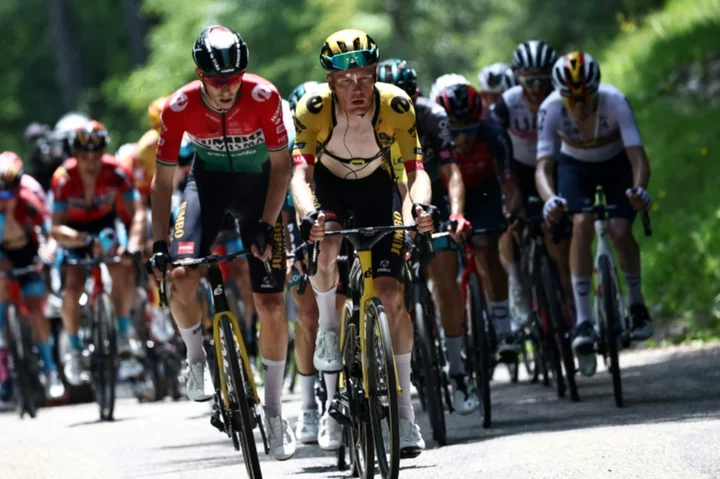Eddie Cheever had a prime seat the last time Formula One rolled the dice in Las Vegas.
Behind the wheel of a race car.
Cheever took part in both F1 races that were staged in the early 1980s around a nondescript parking lot next to Caesars Palace — a scorching, glorified karting track that was perhaps the worst excuse for a racing circuit in grand prix history.
“Diana Ross was on the podium," Cheever, who took third in the 1982 race behind winner Michele Alboreto and runner-up John Watson, said with a chuckle. “That's what I remember most."
Those races look downright quaint compared to Formula One's return to Sin City this weekend for a glittering, high-rolling spectacle along the Strip. Hundreds of millions of dollars have been spent to prepare the 3.8-mile circuit that incorporates one of America's most famed streets. Staggering ticket prices give it the exclusive feel of a Super Bowl.
Yet, in some ways, this feels like deja vu.
Four decades ago, there was a big push to make Formula One the next big thing in America. Races sprouted up all over the country. Long Beach. Detroit. Dallas. And, yes, Las Vegas.
All were gone before the end of the '80s, like so many hair bands.
One can't help but wonder if Formula One is simply going through another flash-in-the-pan stage in America, if all the hype fueled by the popularity of the Netflix reality series " Drive To Survive ” and the ample U.S. dollars doled out by F1's American owner, Liberty Media, will soon be running on empty.
Especially if one driver keeps winning nearly all the races.
Max Verstappen arrived in Las Vegas having locked up his third straight world championship nearly six weeks ago. The 26-year-old Dutchman has taken the checkered flag in 17 of 20 races this season and, unless something really unusual happens Saturday night, he'll be the first one crossing the line in his mighty Red Bull machine.
While “Drive To Survive” has concocted some riveting storylines, the real show rarely provides any drama — at least at the front of the F1 field.
It's Verstappen and Everyone Else.
“I'm nostalgic for the way it was,” the 65-year-old Cheever said, remembering his decade-long career in Formula One before he shifted to IndyCar. “There was less dominance technically in those days than there is now.”
He was quick to add that F1 has always been dominated by a handful of well-funded teams, and the series makes no apologies for having the most technologically advanced racing in the world.
If one team has a huge edge over everyone else, so be it. There is no willingness to penalize a team for being too good, as you might see with NASCAR's constantly shifting guidelines in the name of parity.
Fans outside America can certainly appreciate the high-priced wizardry that goes into the making of a dominant car, not to mention the passionate team rivalries and wheel-to-wheel duels further back in the field.
In a way, it's comparable to the nuances of soccer — low-scoring games, time being kept by the referee — that were slow to gain a foothold in this country.
“I enjoy NASCAR," Cheever said, who serves as a consultant to that series and its sports car division, IMSA. “It's just different than Formula One. It's like soccer vs. football. Or baseball vs. cricket. They're similar, but different.”
With a handful of exceptions, Formula One championships have been hoarded for the better part of three decades by a handful of drivers who were fortunate enough to land in the fastest cars.
Michael Schumacher claimed seven championships, including five in a row. Sebastian Vettel ripped off four straight. Lewis Hamilton has seven titles, four of them in succession.
Verstappen's current run began with a riveting, down-to-the-wire duel to beat out Hamilton in 2021, but the last two years have been a total rout. The Dutch star won a record 15 races in 2022 before speeding right on by that mark this season.
“It's not necessarily healthy for the sport, but that's the beauty of Formula One," Cheever said. “If you can get the right car with the right team, you can totally dominate.”
These long runs of dominance are a more recent phenomenon.
From 1961 until 1993, Alain Prost and Ayrton Senna were the only drivers to repeat as champions, and no one captured three titles in a row. But soaring costs have thoroughly separated the haves from the have-nots, with one or two teams generally holding a huge advantage over the rest of the field.
Brendan Dwyer, a professor in the Center for Sport Leadership at Virginia Commonwealth University, said the “competitive imbalance among drivers could be seen as a weakness,” but he still thinks the sport has a bright future in America.
“Formula One has so many other strengths right now that I believe it is much more than a flash in the pan,” Dwyer wrote in an email. “F1 has challenges ahead, namely a very cluttered sports marketplace, but I don’t see the lack of driver competitiveness being one that hinders its growth in the U.S."
He praised Formula One for the marketing of its drivers, which has clearly helped the sport gain a bigger foothold in America than ever before. “Regardless of their individual success, fans are drawn to the drivers’ personalities,” Dwyer wrote.
While most American leagues use some mix of revenue sharing, salary caps and rules changes in a constant effort to maintain competitive balance, it's still the most storied franchises that draw the most eyes.
That's another factor that works in F1's favor.
“Believe it or not, American sports fans love dynasties,” Dwyer said. “We enjoy the first weekend of the NCAA Tournament for the upsets, but in the end, we want to see the best teams in the Final Four.”
The American sports landscape is so much different than it was in the early ‘80s, providing hope that Formula One is here to stay this time around.
Already there is the U.S. Grand Prix at the Circuit of the Americas in Austin, Texas, which has been a fixture on the F1 calendar for more than a decade. A second U.S. race around the parking lot of Miami’s NFL stadium has made a splash in its first two editions.
Now, Formula One has gone all-in on a third U.S. race. This is no sure thing. Even before the green lights flashed, ticket prices had plummeted, and the demand for staggeringly priced hotel rooms was clearly exaggerated.
“We'll have to see if the city of Las Vegas accepts it,” Cheever said. “Having all the roads up and down the Strip closed for a while is probably going to irritate some people.”
This is the biggest gamble yet for Formula One in America.
We'll see if it pays off.
___
Paul Newberry is the national sports columnist for The Associated Press. Write to him at pnewberry@ap.org
___
AP auto racing: https://apnews.com/hub/auto-racing


